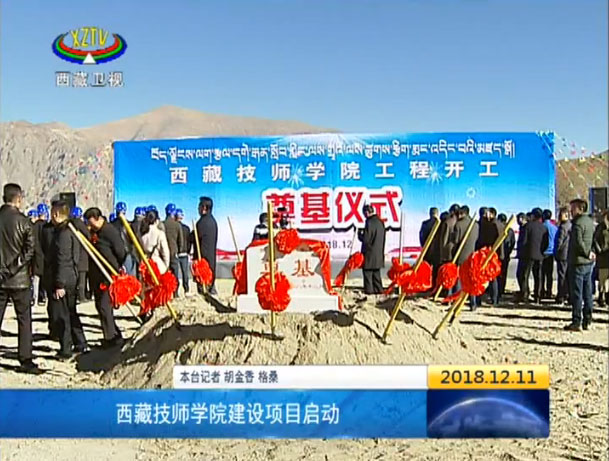High aspirations unite basketball team in Tibet
Although it was early spring in the Tibet autonomous region, with snow still covering the distant mountains and a chill in the air, a group of Tibetans in wheelchairs hardly noticed the cold as they enthusiastically played basketball.
Whoops and cheers filled the air at the basketball courts in Lhasa, the capital of the autonomous region, as the players in wheelchairs enjoyed a game on a recent Sunday.
The players were from the Lhasa Wheelchair-Bound Basketball Team, which was founded in 2014 with the support of the Lhasa Disabled Association.
The team, made up of 25 people with physical disabilities, includes six female players. The oldest player is 57-year-old Chonya Tsering, while the youngest is 21-year-old Dekyi Yangzom.
Despite physical challenges, the members all look tough and energetic. They love basketball so much that they have showed up for a game every Sunday since 2014, except when extreme weather or important holidays interfered.
They were encouraged to play basketball in wheelchairs by the regional and city associations for the disabled. In addition, they were provided with 10 specialized wheelchairs with large, tilted wheels for use in the games, said Tenzin, the team's captain.
In recent years, they usually have played their games on the basketball court of the region's sports park, which is open to everyone. The rubberized court provides an ideal condition for wheelchairs.
The team's members come from different fields and include painters, tailors and workers at government institutions. However, despite their varying backgrounds, they are united each Sunday in their enthusiasm for basketball.
Tenzin, who like many Tibetans has just one name, said that along with social progress, disabled people now have broader job opportunities, and their need for physical exercise has increased.
"Traditionally, people think disabled people are lazy and don't exercise, but we find that doing sports can help prevent disease and make us stronger," said Tenzin, 30, who serves as the secretary-general of the Tibet Physically Disabled Association.
He said that although his team members all like basketball, they face challenges that other players don't. For example, he said, most basketball courts in the city do not have wheelchair ramps at the entrances.
"The situation every Sunday is different. Sometimes we have more people join the game, so we start around 1 pm and finish around 6 pm, and we communicate via WeChat group chat," said Tenzin, whose legs were partially disabled when he injured his spine in an accident in 2006, when he was 18.
The team's members receive an allowance each Sunday from the local government to buy water or other beverages or to buy parts for broken wheelchairs. Tenzin knows how to fix wheelchairs, so when someone needs help with repairing a wheelchair, the only charge is for replacement parts.
Dekyi Yangzom, the youngest player, who goes by the name Deyang, said she likes playing basketball so much that she has seldom missed a Sunday game since becoming a member of the team in 2014.
"I love playing basketball, and playing with my team members gives me great joy. I also find it more interesting to spend my weekend this way," said Deyang, who has worked since 2016 as a secretary for the Tibet Blind Person's Association.
Deyang also said she likes watching NBA games, and her favorite player is Stephen Curry of the Golden State Warriors. Her dream is to play elsewhere in China, and her ultimate goal is to play in the Paralympics, she added.
To achieve their common goal of participation in the Paralympics, the team has held two events in the past two years that drew around 40 people with physical disabilities to participate in archery, basketball shooting and table tennis contests.
While Deyang and Tenzin work for the government, some of the other members have their own businesses. Among them is Dondrub Choephel, who works as a Tibetan thangka painter.
Dondrub Choephel, who comes from the region's Maldrogungkar county and suffered from polio as a child, wanted to learn thangka painting, a traditional Tibetan Buddhist art, after finishing junior middle school.
He apprenticed with two thangka masters, and after nine years of learning, he became an independent painter. He usually paints in his home, and more and more people recognize his name and see his paintings, so orders for his artwork are increasing.
A painting generally takes about 20 days to complete, though a bigger, more refined work can take a month or longer to finish.
"I love sports, but I cannot play often anymore, because it is not good for my painting," said the 30-year-old. He explained that playing sports more frequently caused his fingers to tremble, and he needs a steady hand to paint fine details.
Dondrub Choephel said he wished more basketball games played by physically disabled people were available to watch online.
He added that he aspires to eventually exhibit his work in the region's annual thankga exhibition.
"I also hope to apprentice more students in the future, which is another of my dreams."
Tibet Stories

Put down stockwhip to become a web celebrity businessman
Lapa Tseren, who is from a family of herders, couldn’t imagine that one day, he could put d...







